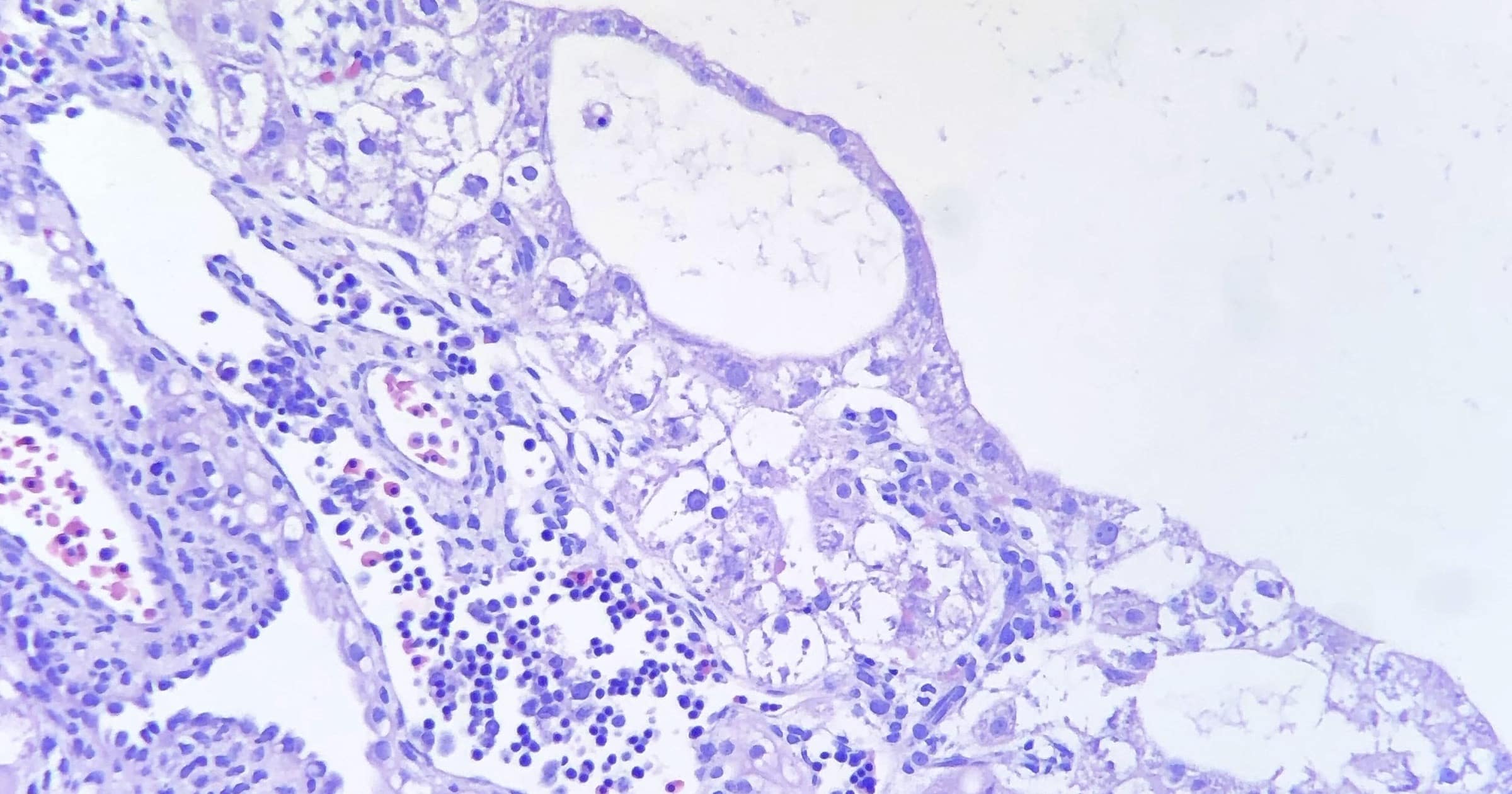 Evolution
Evolution
 Intelligent Design
Intelligent Design
Merry Christmas! No. 8 Story of 2023: Another “Vestigial” Organ Has “Absolutely Critical” Functions

Editor’s note: Welcome to an Evolution News tradition: a countdown of our Top 10 favorite stories of the past year, concluding on New Year’s Day. Our staff are enjoying the holidays, as we hope that you are, too! Help keep the daily voice of intelligent design going strong. Please give whatever you can to support the Center for Science & Culture before the end of the year!
The following was originally published on September 25, 2023.
“The human yolk sac is often considered vestigial.” So states a 2017 paper in PNAS, which goes on to say “The human embryo retains a yolk sac, which goes through primary and secondary phases of development, but its importance is controversial.” That paper went on to report that “human secondary yolk sac likely performs key functions early in development.”
But a new paper in Science, “Yolk sac cell atlas reveals multiorgan functions during human early development,” has seemingly settled this debate by showing that the human yolk sac “generates the first blood and immune cells and provides nutritional and metabolic support to the developing embryo.” A commentary about the paper in Science — “Three organs in one? Researchers unscramble mysterious roles of human yolk sac” — explains the import: “it’s not vestigial … the human yolk sac is a multitasker, the study shows. It also carries proteins for breaking down harmful toxins and produces proteins necessary for blood clotting.”
Chickens and Duck-Billed Platypuses
The article elaborates:
Like chickens, duck-billed platypuses, and other animals that hatch from eggs, you had a yolk sac when you were an embryo. For many vertebrates, this pouch serves multiple developmental roles, including holding, well, yolk, the nutrient-rich liquid that helps nourish the embryo.
However, the function of the human yolk sac is unclear. It contains no yolk and dwindles during the second trimester of pregnancy — the placenta instead provides the key route for feeding the offspring. Now, a study out in Science today reveals the human yolk sac stands in for organs such as the liver and kidneys that arise later in development. The findings could help researchers create better embryo mimics in the lab and devise new ways to cultivate immune cells for treating diseases.
[…]
What the results of the study show, Haniffa says, is that “there is a fleeting structure during early development that is absolutely critical for the embryo.” The versatile yolk sac “is three organs in one,” she says, performing jobs that will later be delegated to the liver, kidneys, and bone marrow.
Retaining Evolutionary Interpretations
Unfortunately, despite the importance of this “absolutely critical” organ, some are still intent upon retaining evolutionary interpretations. An article about this research at Science Alert exhibits this reasoning:
Now a large team of researchers led by the Wellcome Sanger Institute in the UK has uncovered a good reason for holding onto this seemingly useless relic of our deep evolutionary past. A few good reasons, in fact.
“Mapping out how the yolk sac evolves during these first weeks of pregnancy is fundamental to the understanding of the development of the immune system,” says dermatologist Muzlifah Haniffa, senior author of a recent study profiling the human yolk sac’s tissues as part of the international Human Cell Atlas initiative.
“This is the first time that we show the multiple organ functions of the yolk sac — we’ve seen a relay from the yolk sac to the liver, to the bone marrow.”
Investigations based on various model animals suggest our yolk sac is the source of our very first blood cells. Not just the oxygen-transporting red variety, but the white cells that serve as an immune response, which travel from the sac to the liver, and then later to the bones where they settle to help form marrow.
What we see here is that even in the face of clear evidence of function for this structure in human development, it’s still being understood as a “relic of our deep evolutionary past.” The intelligent design paradigm sees biology very differently: If we assume that structures are present for a reason, then we’ll find that they probably have important functions. This ID-based assumption has borne fruit over and over again in biology — leaving one to question whether evolutionary concepts about “vestigiality” or “relics of our past” ought themselves to become relics of the past.
